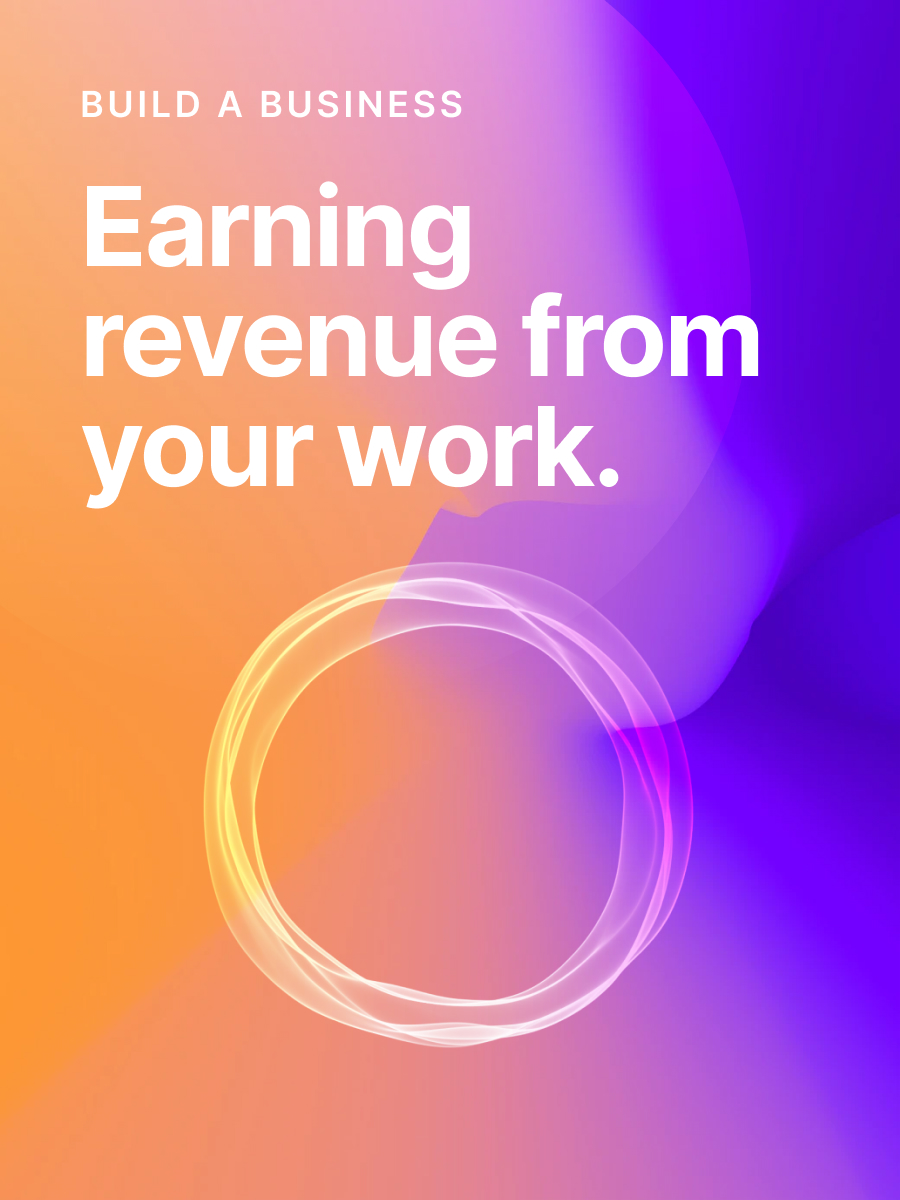📈 Raising your revenue
Whether you began your blog as a fun hobby or have always been planning for profit, it might be time to start getting paid back for all of your hard work. Once your publication has a life of its own, keeping the beast fed should be a high priority, and cash is what it's hungry for. This week's newsletter is about how to gain revenue using paid subscriptions, examining proven ways to earn, and whether or not running ads is right for you. Let's go!
In this week's issue 📨
- Offering premium subscriptions
- Successful ways to monetize
- The pros and cons of ads
Was this email forwarded to you? Subscribe here!
Time for a little payback

When you're ready to gain income from your publication, there are multiple ways to monetize. You can start selling digital products, nab some brand partnerships, or become a pro at affiliate marketing. However, these roads are sometimes bumpy and unpredictable. If you're looking for consistent gains, the premium subscription route could be your perfect path to predictable profits.
Let's break down how the paid subscription model can keep you independent, sustainable, and successful.
What is a subscription business?
- A subscription business allows you to generate revenue from publishing content. Some of the biggest real-world examples of this are signing up for Netflix or subscribing to your favorite Patreon creator. Your readers can choose to support you by subscribing to a premium membership.
- This business model thrives best with publishers that offer unique, quality content. If you expect your followers to be ok with charging them a recurring monthly or yearly fee, they shouldn't be able to find your work anywhere else, and the solutions you offer should be worthwhile.
Are subscriptions the right fit?
- Turning your blog into a subscription business is an excellent option for anyone wanting to generate revenue from their content. You don't need to appeal to a mass audience to find success, either. Niche markets are larger than ever and can become a bountifully big business.
- The subscription model is an increasingly popular option for publishers of all kinds. You can make a stable income, you control your destiny by not having to rely on anyone else, and you don't need a huge audience to succeed. It also helps build trust with your audience and encourages reader engagement.

How do you start?
- Getting started is always the hardest part. If you have an existing niche and audience, you're ready to hit the ground running, but it's still beneficial to research the best way to begin. Know your niche, acknowledge what makes you unique, and recognize your ideal customer.
- Membership blogs can fall into any niche, so it's time to differentiate your content from the rest. What are you an expert in? Who's currently the best at what they do? What customer research have you done? Try having honest conversations with yourself and your members.
What should you charge?
- You'll rarely nail your pricing strategy from the get-go. You have to give yourself room to experiment, make mistakes, and receive feedback from your audience. Most creators tend to undervalue their work, which can lead to unsustainable business models or even failure, so know your worth!
- Sit down and list your business goals. How many members do you want, and how much do you want to earn? If you're still unsure, analyze what your competitors charge and use their numbers as a jumping-off point. Price is never set in stone, so it's perfectly ok to adjust as you grow.
Interesting stories & ideas 📚
- Most asked questions in 2024 – Ahrefs Blog
- What I learned in year 4 – Platformer
- First 5 things to do when starting over – HubSpot
- The next generation of news – Embedded
- Write numbers instead of words – Ariyh
Down the revenue road

If you're not sure which revenue routes to choose for your newsletter, you're not alone. There are numerous monetization methods out there, and there's no magic formula to help you decide what's best for your business. The only way to find out what will work for your blog is to dive into the deep end and see which strategies keep you afloat and which make you sink.
Duncan Elder, content writer at MailerLite, shares some proven ways to profit from your quality content.
#1 Promote other businesses to earn a commission when someone you refer makes a purchase. Be sure that who you promote makes sense for your niche!
#2 Sponsored emails are a great way to charge more for in-content ads by creating a one-off email that contains exclusive content paid for by a company.
#3 Digital products like ebooks and online courses can be sold repeatedly without much effort, which makes them a simple revenue source.
#4 Add a tip jar to your site or use donation tools like Buy Me a Coffee to provide an easy way for site visitors to support your work for any reason.

#5 Sell merchandise if your audience wants to buy physical products with your branding. This is also a nice way to build brand advocacy and awareness.
#6 Organize events like conferences, meetups, and webinars. Just be sure you have a super-engaged audience that can get excited about connecting.
#7 Offer services like consulting or coaching if you have special skills to solve problems and your readers see you as an expert in your chosen niche.
#8 Join a partner network to recommend other newsletters to your members. When someone from your list subscribes, you get paid.

Appetizing ads

Many publications start monetizing their business by running ads, but is this the right approach for you? The truth is that ads aren’t a good fit for every blog, and they've never been the perfect way to make money, but they're always worth a try. Ads won't be your secret sauce to endless cash, but they can still be fruitful if you play your cards right.
Darren Rowse, founder of ProBlogger, explains some key pros and cons of running advertising on your publication.
Pro: If you're new to the blogosphere, running ads is one of the easiest monetization methods to start with. It's as simple as signing up for a network like Google AdSense, and once you're approved, you can begin immediately.
Con: Ads may take visitors away from your blog whenever clicked. Larger sites with lots of traffic don't have to worry about this too much, but if you're trying to build an audience, keeping their attention is a higher priority.
Pro: Rather than running ads through a network, you can partner with other companies to sell ad space privately. This means you can set your own rates and have more control over the ads displayed on your site.
Con: Watch out for ad blockers! You may spend time investing in ads only to have them not be seen by some of your followers, leading you to lose revenue. Consider who your audience is and if they'll be receptive to seeing ads.

Pro: Running ads can help you find what products and services your readers love. Many ad networks offer comprehensive reporting so you can see what your audience is clicking with.
Con: Ads can make your publication look a bit spammy. When using an ad network, you won't know what will appear on your site until it's there, and not all ads are pretty. If you're worried about this, sell ad space privately.
Pro: While ads may not boost you to Scrooge McDuck status, you'll likely find their performance consistent. Your business can have unpredictable peaks and valleys, so dependable income from ads can help keep you from falling.
Con: Huge sites can make a lot of money through ads, but small sites won't see much revenue. Running ads is an easy monetization method, but it's ok to try a new approach if you're not seeing much payoff.
Curator's pick ✍️

Enjoy this newsletter? Forward to a friend or hit reply to share your thoughts. We don't bite! 👻
Want more how-tos? Search our library of tutorials and subscribe to our monthly "Build with Ghost" newsletter.
Join our Ghost Creator Community! Connect with like-minded people who create content professionally — apply here.






